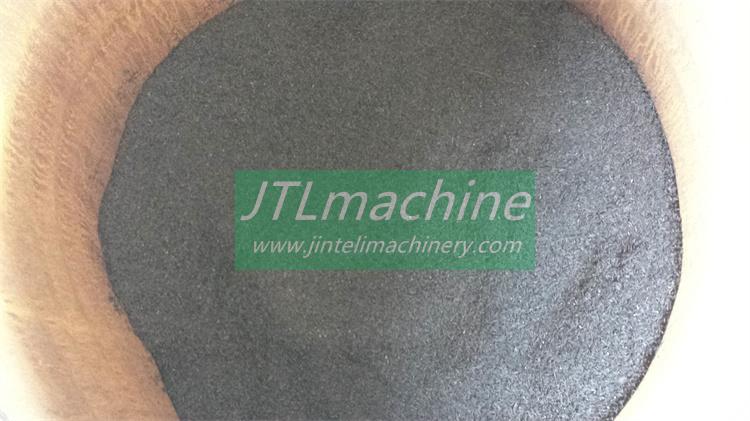Table of Contents
Understanding the Functionality and Benefits of carbonizing furnace
Understanding the functionality and benefits of a carbonizing furnace, particularly the horizontal carbonization machinery, is essential for industries that rely heavily on the conversion of biomass into charcoal. This process, known as carbonization, is a critical step in the production of various products, including activated carbon, biochar, and charcoal briquettes.
The carbonizing furnace operates on the principle of dry distillation. It heats biomass materials, such as wood chips, coconut shells, or rice husks, in a low-oxygen environment. This process prevents the materials from combusting, instead causing them to decompose into carbon-rich solids, volatile gases, and tar. The carbon-rich solids, or charcoal, are the primary product of the carbonization process.
The horizontal carbonization machinery is a type of carbonizing furnace that is designed for efficiency and ease of operation. As the name suggests, it is horizontally oriented, which allows for a more uniform distribution of heat and a more consistent carbonization process. The machinery is typically equipped with a series of heating elements that can be individually controlled to maintain the optimal temperature for carbonization.
One of the key benefits of the horizontal carbonization machinery is its high carbonization rate. This is largely due to its design, which ensures that the heat is evenly distributed throughout the furnace. This uniform heat distribution allows for a more complete carbonization of the biomass materials, resulting in a higher yield of charcoal.
Another significant advantage of the horizontal carbonization machinery is its environmental friendliness. The machinery is designed to capture and recycle the volatile gases and tar that are produced during the carbonization process. These by-products can be used as a source of heat for the furnace, reducing its reliance on external energy sources. This not only makes the machinery more energy-efficient but also minimizes its environmental impact by reducing emissions.
The horizontal carbonization machinery also offers a high degree of automation, which can significantly reduce labor costs. The machinery is typically equipped with an automatic feeding system, which ensures that the biomass materials are continuously fed into the furnace. This eliminates the need for manual feeding, which can be both time-consuming and labor-intensive.
Moreover, the machinery also features an automatic discharging system, which removes the charcoal from the furnace once the carbonization process is complete. This not only improves the efficiency of the production process but also enhances the safety of the operation by minimizing human interaction with the hot furnace.
In conclusion, the carbonizing furnace, particularly the horizontal carbonization machinery, is a vital tool in the production of charcoal and other carbon-rich products. Its high carbonization rate, environmental friendliness, and automation capabilities make it an efficient and cost-effective solution for industries that rely on the carbonization process. By understanding its functionality and benefits, businesses can make informed decisions about incorporating this machinery into their production processes.
Exploring the Efficiency of Horizontal Carbonization Machinery in Industrial Applications
The advent of modern technology has brought about significant advancements in various industrial applications, one of which is the development of horizontal carbonization machinery. This machinery, also known as a carbonizing furnace, has revolutionized the carbonization process, making it more efficient and environmentally friendly.
Carbonization is a chemical process that involves the conversion of organic substances into carbon or a carbon-containing residue through pyrolysis or destructive distillation. Traditionally, this process was time-consuming, energy-intensive, and produced a significant amount of pollutants. However, the introduction of horizontal carbonization machinery has significantly improved the efficiency and environmental sustainability of this process.
The horizontal carbonization machine is designed with a horizontal furnace structure, which allows for a more uniform heating and carbonization process. This design ensures that all parts of the material being carbonized are evenly heated, resulting in a higher quality end product. Moreover, the horizontal structure allows for a larger processing capacity, making it ideal for large-scale industrial applications.
One of the key features of the horizontal carbonization machine is its advanced heating system. This system uses a combination of direct and indirect heating methods to achieve a high carbonization rate. The direct heating method involves burning a part of the raw material to generate heat, while the indirect heating method uses hot air circulation to ensure that the heat is evenly distributed throughout the furnace. This dual heating system not only increases the carbonization rate but also reduces energy consumption, making the process more cost-effective.
Another notable feature of the horizontal carbonization machine is its smoke-free and pollution-free operation. The machine is equipped with a dust removal system that effectively filters out dust and other pollutants from the exhaust gas. Additionally, the machine has a gas recovery system that collects and reuses the combustible gas generated during the carbonization process. This not only reduces the emission of harmful gases but also provides an additional source of energy, further enhancing the efficiency of the machine.

The horizontal carbonization machine also boasts of a high degree of automation. The entire carbonization process, from feeding the raw material to discharging the end product, can be controlled and monitored through a central control system. This not only reduces labor costs but also ensures a consistent quality of the end product.
In conclusion, the horizontal carbonization machine, with its innovative design and advanced features, has significantly improved the efficiency and environmental sustainability of the carbonization process. Its ability to provide a uniform heating and carbonization process, combined with its advanced heating system, dust removal system, and high degree of automation, makes it an ideal choice for industrial applications. As we continue to strive for more sustainable and efficient industrial processes, the role of machinery like the horizontal carbonization machine will undoubtedly become increasingly important.





